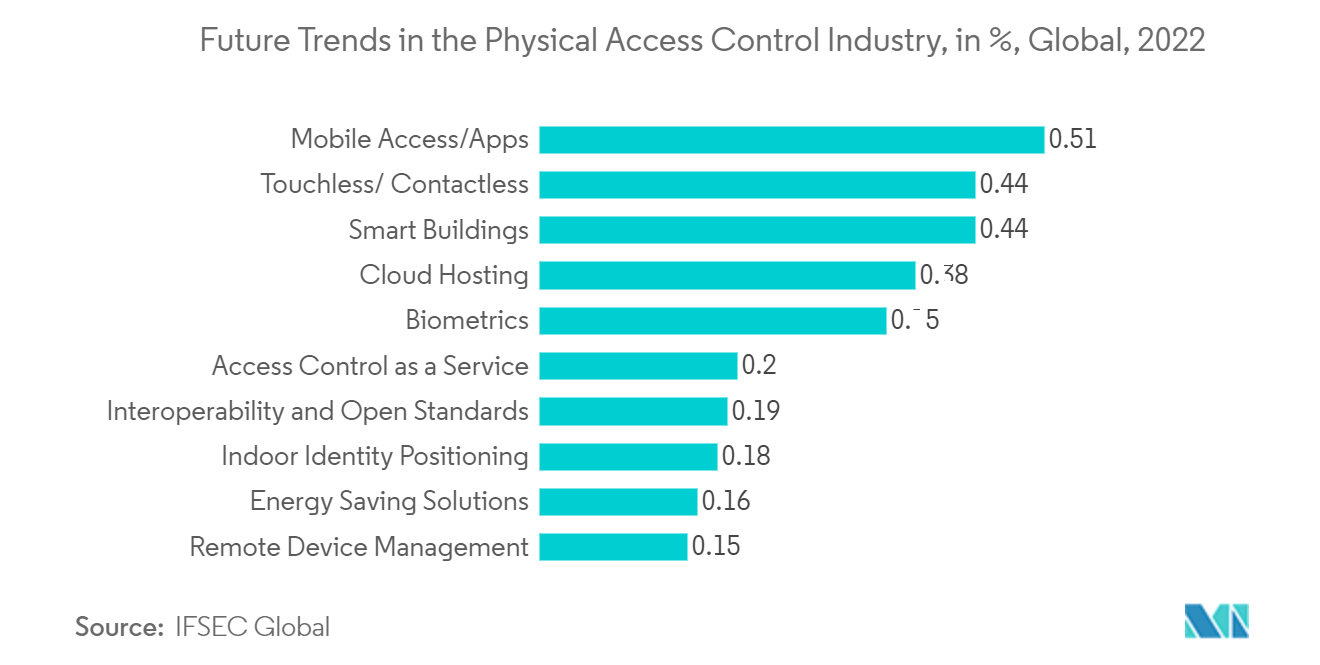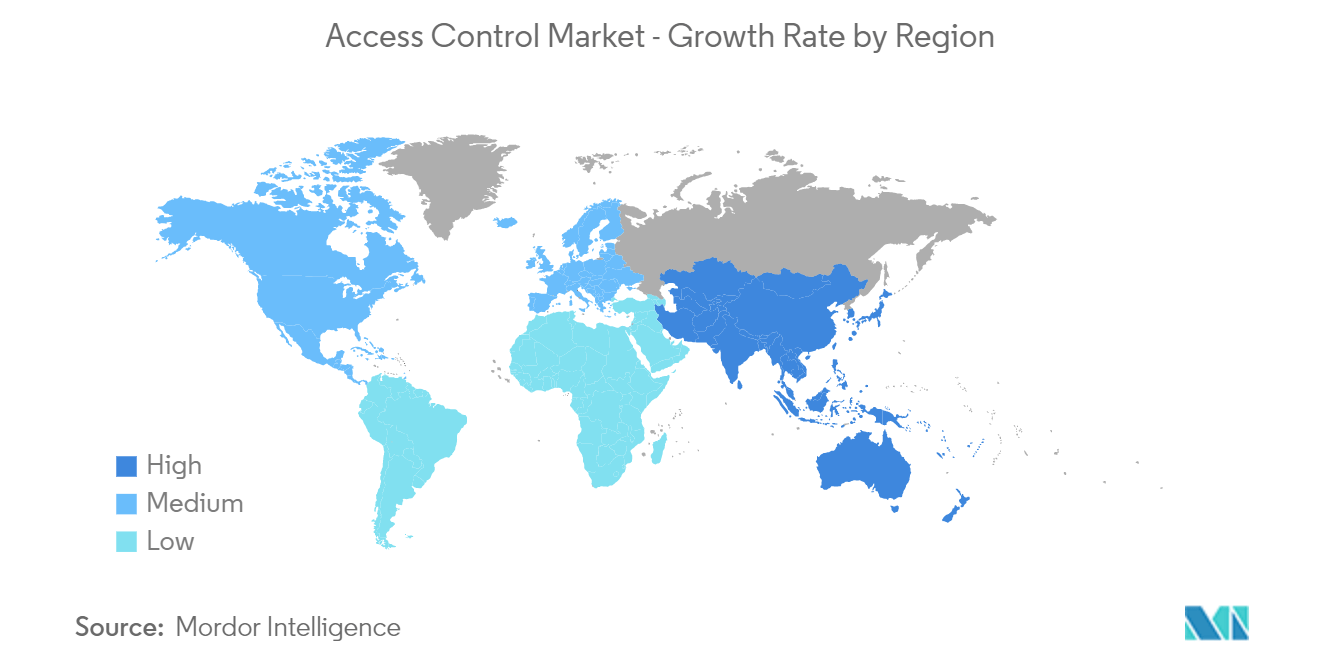Market Trends of Access Control Industry
Commercial Segment to Hold Major Market Share
- Access control systems have become the preferred way to manage access to commercial buildings, offices, and businesses. These systems offer enhanced property security and convenience for tenants and staff, who can easily enter with a credential while denying access to unauthorized individuals. Access control systems can also provide a way for visitors to request property access from tenants.
- Employee theft is a significant issue that creates a demand for access control systems. According to an article by CompareCamp, global loss from fraud and employee theft is estimated to be USD 2.9 trillion annually, and 33% of corporate bankruptcies in the United States are linked to employee theft. Deploying access control systems can effectively reduce employee theft by permitting or denying entry to individuals with a key card.
- Access control systems can be built to restrict physical access to IT rooms where sensitive information is stored. Different access control systems come with various identification protocols, such as smart card identification, biometric identification, mobile access identification, and proximity identification.
- Advancements in wireless technology have enhanced wireless hardware components such as locks and controllers, reducing the need for physical cables and conduits. Cloud technology services are also reducing the requirement for servers and software, facilitating secure remote access.
- The market for access control systems is expected to grow due to increasing safety consciousness, the growing demand for high-level access control systems, and the adoption of access control devices in commercial organizations.

Asia Pacific to Witness Significant Growth
- In the Asia-Pacific region, China continues to dominate the market, mainly due to its expanding construction sector, a large number of manufacturing industries, and a growing crime rate. The adoption of mobile-based access control solutions is also on the rise in the country. China's smart door lock segment has grown exponentially in recent years, driven by advancements in biometric recognition and wireless communication technologies.
- In Japan, the security aspect of access control solutions has gained significant interest from the government and enterprises, leading to the establishment of new legislation, strategies, and facilities. Japanese companies are actively researching and developing newer biometric and authentication devices that enable a touchless experience.
- India is witnessing a surge in the deployment of access control solutions in various sectors, including data centers, office premises, hotels, retail stores, and government institutions, primarily due to the rapidly growing security concerns and increasing crime rates.
- South Korea is making significant efforts to advance digital transformation in the country, with initiatives such as the Korea Digital Development initiative and digital government strategy for 2021-2025. Contactless technology and solutions, such as facial recognition and fingerprint locks, are emerging rapidly in the country, driven by the government's strong will to foster contactless technologies.
- Other countries in the Asia-Pacific region, such as Australia and Singapore, are also witnessing a rise in the adoption of access control solutions, driven by the rising IoT technologies and the necessity for protections against COVID-19. These solutions are seen as a means to support safe and secure social infrastructure as the digital revolution of facility management continues to propel forward.


